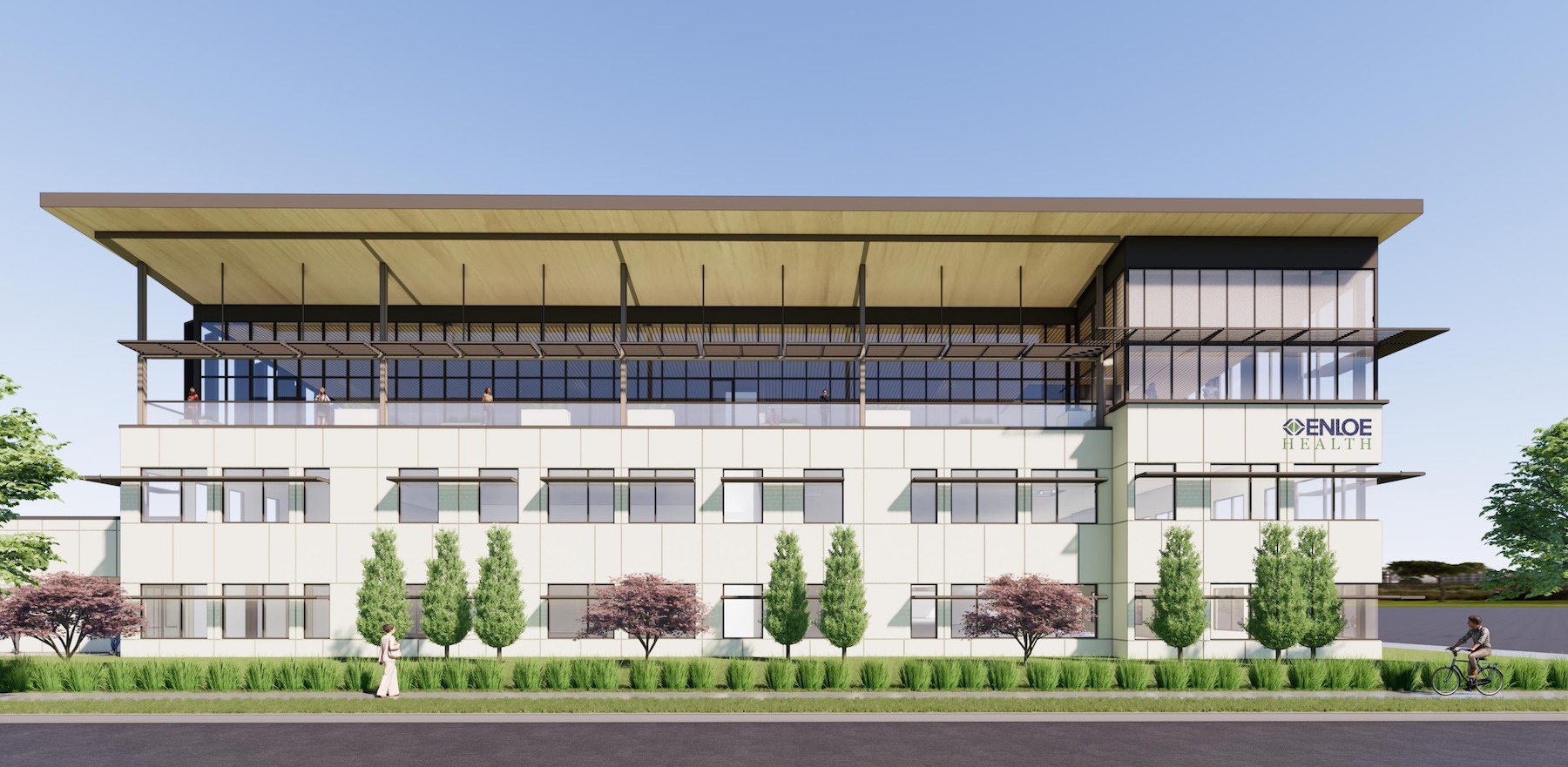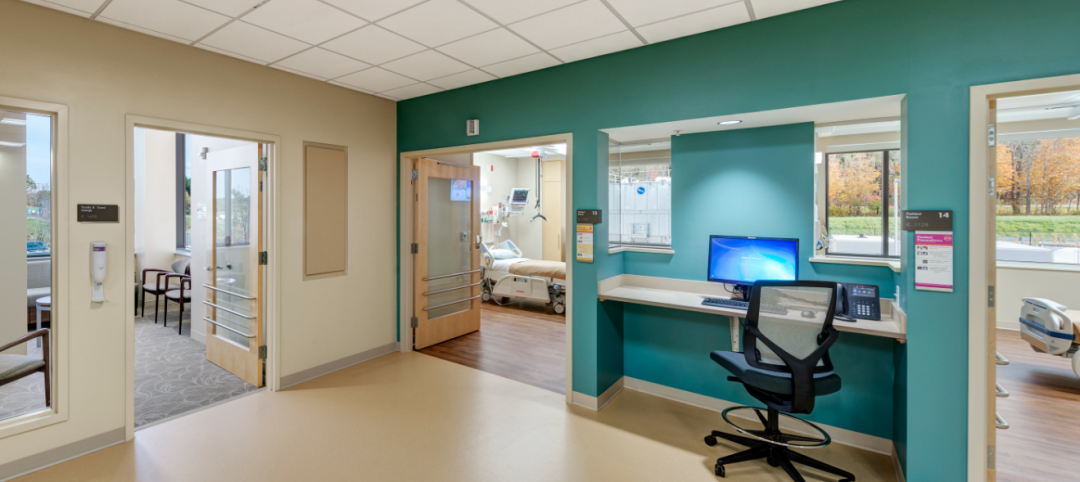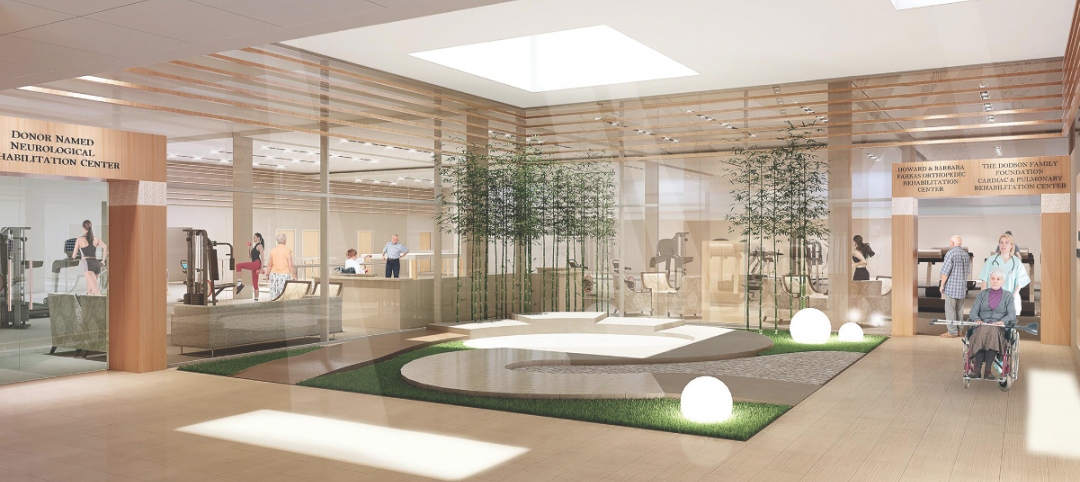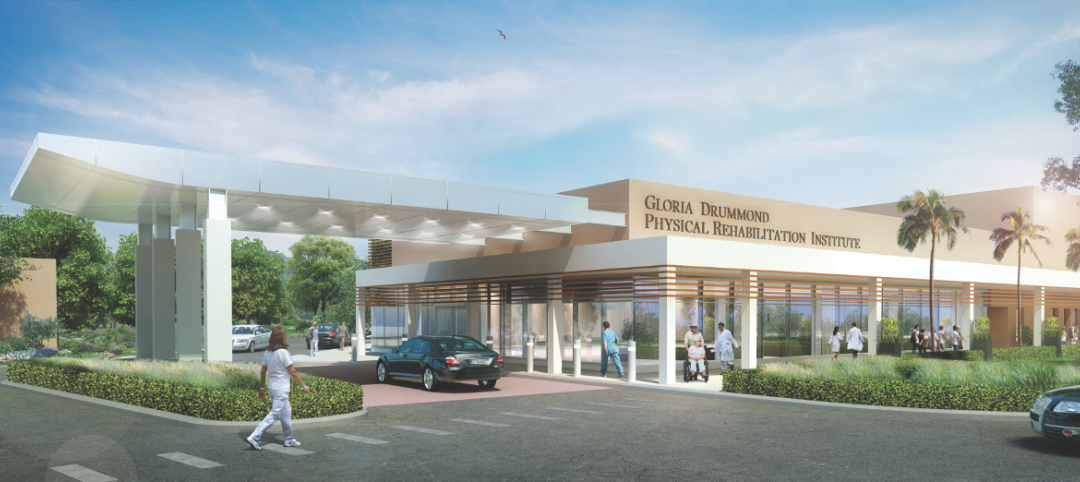Design-build and, to a somewhat lesser degree, Integrated Project Delivery (IPD) have become increasingly popular and common contract platforms for healthcare projects. These agreements promise greater efficiency and share the profit risk on new construction among developers, health systems, and AEC firms.
Add to that list of options Collaborative Project Delivery (CPD), which Covalus—a Dallas-based healthcare project management consultant that has pioneered this contractual initiative—says simplifies IPD in ways that make it more attractive to participants without sacrificing IPD’s benefits.
Also see: Healthcare construction costs for 2024
Covalus claims that CPD has been applied to more than $3 billion in healthcare projects. One of these is Enloe Health’s Comprehensive Cancer Center, a 107,000-sf outpatient building on 13 acres in Chico, Calif. This three-story project, valued at $154 million, broke ground this month, and is scheduled for completion in Spring of 2026.
According to this project’s general contractor Swinerton, CPD is different from other contractual agreements in that it allows team members to contribute a specific fee that they can earn back by achieving agreed-upon performance thresholds. “This simplified form of agreement eliminates the need for complex, multiparty legal and insurance mechanisms,” said Swinerton in a prepared statement.
Separate contracts, bridged together
Enloe Health’s previous experiences with projects under conventional design-bid-build contracts had left a bad taste in its mouth because those contracts opened the door for change orders that impacted negatively on the project’s cost, explained Kevin Woodward, Enloe Health’s chief financial officer.
There was also some urgency in finding the right project manager for its proposed Comprehensive Cancer Center. The region that encompasses Chico has one of the highest rates of cancer-related deaths in California. However, said Woodward, 60 percent of the region’s cancer patient population was bypassing Enloe Health’s facilities because they didn’t have the care capacity to handle that level of patient volume.
Enloe Health worked with ECG Management Consultants, a division of Siemens Healthineers, to conduct a space analysis to determine the size and prospective cost of a new CCC. After its board signed off on the facility, Enloe partnered with Covalus, which Woodward said had more-refined costing tools, and a track record with project management under CPDs.
By that time, HGA was already attached as the project’s design-architect. James Willsie, Principal and Associate Vice President with HGA, explained in an email to BD+C how CPDs differ from other delivery contracts:
“Typically with design building, there is one contract between the owner and the contractor, with the design team as a sub. With IPD, typically there is a three-way contract [among] the owner, contractor, and architect, with a target cost and schedule. There is profit at risk for the contractor, architect, and typically further downstream [for] consultants and subs, [which] becomes a project contingency.”
For a CPD, on the other hand, says Willsie, “the owner has a contract directly with the architect, a separate contract directly with the contractor, and a contract directly with the owner’s representative. There is also a multiple-party contract among all four parties that sets up profit at risk and enhanced profit put up by the owner.” The profit at risk and incentive pool are distributed upon meeting prearranged targets for schedules, budget, and a regularly administered feedback survey of the owner. The incentive pool is pushed through to key consultants and subcontractors, says Willsie.
Additional collaborators on the Enloe Health project include Buehler Engineering (SE), ECOM Engineering (electrical and low voltage engineering), Weston & Associates (M/P engineering), Criterion (medical equipment planning), NorthStar (CE), and Marquis (security).
Similar to design-build and IPD, CPD utilizes big room meetings, Target Value Delivery, RO logs, and other lean delivery principles, says Willsie.
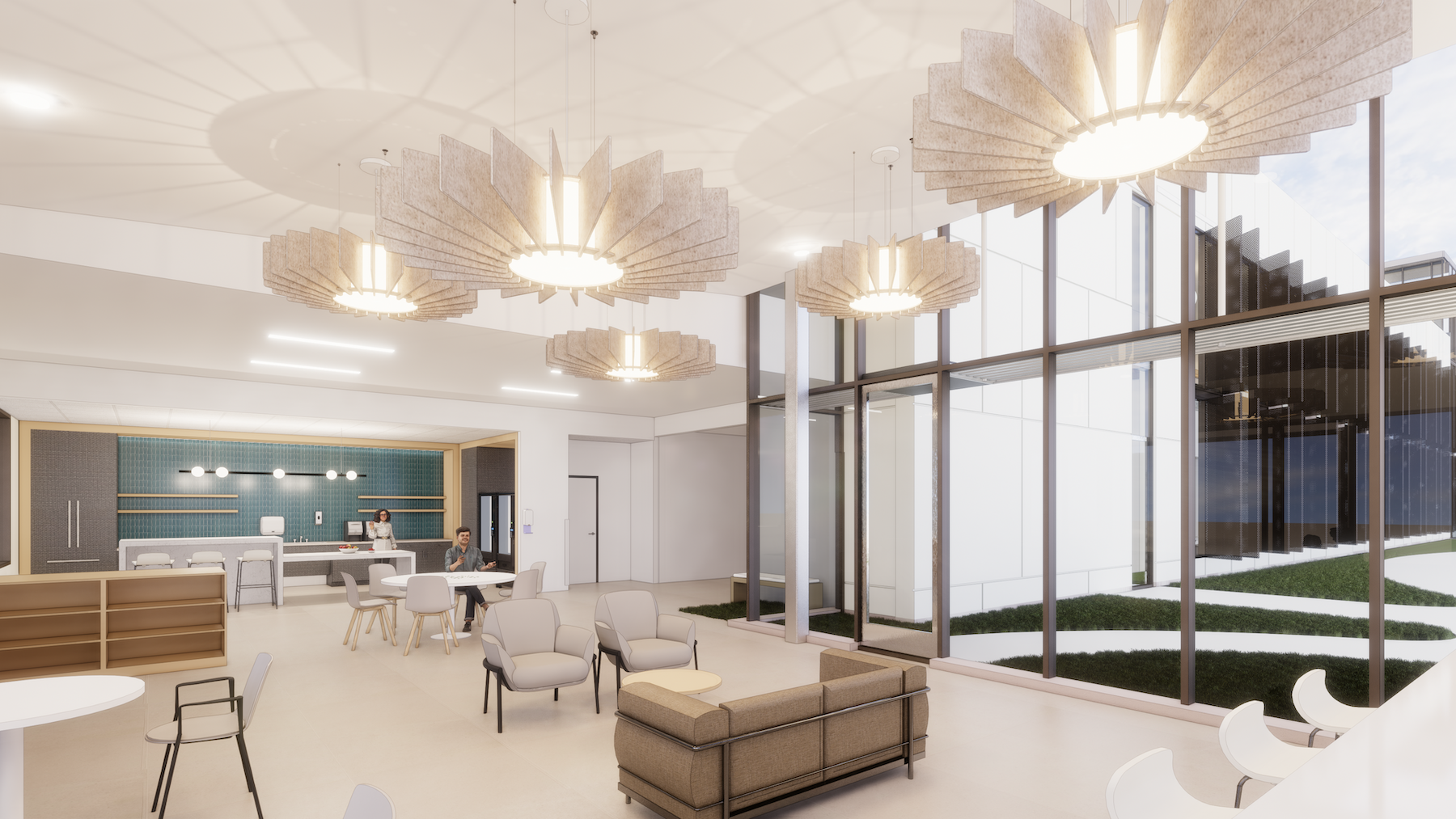
Cost predictability a goal
Any level of contractual collaboration requires give and take from all participants. That includes a strategic vetting of partners for purposes of compatibility; early engagement of project team members to define objectives and goals, as well as performance parameters; and ongoing communication among all stakeholders, according to a December 31, 2022 posting by AIA Contract Documents, which are the starting points for Covalus’ CPDs.
During the design process for Enloe Health’s new cancer center, HGA’s Design Insight Group used research and benchmarking to cross-check and validate decisions. Enloe provided data to modify designs and determine how they might improve space programming. “The data we review is critical to achieving operational efficiency and treatment outcomes while improving the experiences of patients, physicians, and medical support staff alike,” said Jennifer Ries, HGA’s Senior Medical Planner, in a statement posted on the firm’s website.
In an interview with BD+C, Mark Chenoweth, Founder and Principal of Covalus, said that his firm started using CPD contracts about seven or eight years ago. He explained that CPDs combine the benefits and efficiencies of IPDs with traditional delivery methods. “CPDs preserve traditional contractual arrangements, and the contracts are tied together by bridge agreements,” Chenoweth elaborated. He added that CPDs stipulate a guaranteed maximum price for a project, which IPDs do not. (The GMP for Enloe Health’s project will be nailed down on June 1, said Woodward.)
Chenoweth said that owner expectations of CPDs revolve around cost predictability, value, speed to market, and team performance.
“CPDs set realistic value for the work and process,” said Chris Morris, Vice President-National Healthcare at Swinerton, for which the Enloe Health project is its first under an CPD contract. “If you have a good roadmap, the team feels success.” Morris said that one of the goals for these incentives-based team collaborations is to avoid “non-rewarding” work, like value engineering.
Concise construction management
Chenoweth explained that the fee that contractual partners pay as part of the contract is a percentage of the cost of work and a portion of the minimum amount of the profit at risk; a kind of buy-in, he agreed. For the Enloe Health project, every firm under the CPD contract will receive at least 1.5 percent of their overhead. (That percentage, said Woodward, is one-third of the profit-at-risk for the contract’s participants. In Swinerton’s case, the 1.5 percent is equivalent to about $250,000, he said.)
Woodward, whom BD+C interviewed yesterday, said that Enloe Health has been satisfied with the results from the CPD. “It’s been a great project, and we’re right on track.” Woodward has been particularly impressed with the problem solving in big room meetings, Covalus’ representation on behalf of the owner, as well as with the “visibility” that Enloe has had into the bids from all of the trades.
The new Comprehensive Cancer Center in Chico will include three linear accelerator vaults and a 56-bay infusion center, according to Jolene Francis, Enloe Health’s Vice President of Philanthropy and Communications. Enloe expects the new center to create between 75 and 100 permanent jobs.
Chenoweth said that Covalus is managing other healthcare projects under CPD contracts in the Midwest and East Coast, and is talking with six other health systems. Morris speculated that healthcare sector has been amenable to these kinds of contracts because they “add structure to a complicated business that is ripe for change. CPDs are more concise and consistent.”
Related Stories
Healthcare Facilities | Sep 11, 2015
Health Product Declaration Collaborative releases updated HPD Open Standard – Version 2.0
Advances transparent disclosure of building product contents
Healthcare Facilities | Aug 28, 2015
Hospital construction/renovation guidelines promote sound control
The newly revised guidelines from the Facilities Guidelines Institute touch on six factors that affect a hospital’s soundscape.
Healthcare Facilities | Aug 28, 2015
7 (more) steps toward a quieter hospital
Every hospital has its own “culture” of loudness and quiet. Jacobs’ Chris Kay offers steps to a therapeutic auditory environment.
Healthcare Facilities | Aug 28, 2015
Shhh!!! 6 ways to keep the noise down in new and existing hospitals
There’s a ‘decibel war’ going on in the nation’s hospitals. Progressive Building Teams are leading the charge to give patients quieter healing environments.
Mixed-Use | Aug 26, 2015
Innovation districts + tech clusters: How the ‘open innovation’ era is revitalizing urban cores
In the race for highly coveted tech companies and startups, cities, institutions, and developers are teaming to form innovation hot pockets.
Healthcare Facilities | Aug 19, 2015
5 brand-building strategies in the outpatient environment
No longer coasting off of reputation, leading organizations are using new ambulatory care centers to re-brand for the future of healthcare, writes CannonDesign's Jocelyn Stroupe.
Healthcare Facilities | Aug 18, 2015
Transforming the patient-clinician experience in retail healthcare: 5 'flips' to consider
Flip the Clinic is a Robert Wood Johnson Foundation project invented to transform the patient-clinician experience. In their language, “flips” are actionable ideas for change, writes Gensler's Tama Duffy Day.
Giants 400 | Aug 6, 2015
GIANTS 300 REPORT: Top 75 Healthcare Construction Firms
Turner, McCarthy, and Skanska top Building Design+Construction's 2015 ranking of the largest healthcare contractors and construction management firms in the U.S.
Giants 400 | Aug 6, 2015
GIANTS 300 REPORT: Top 80 Healthcare Engineering Firms
AECOM, Jacobs, and Burns & McDonnell top Building Design+Construction's 2015 ranking of the largest healthcare engineering and engineering/architecture firms in the U.S.
Giants 400 | Aug 6, 2015
GIANTS 300 REPORT: Top 115 Healthcare Architecture Firms
HDR, Stantec, and Perkins+Will top Building Design+Construction's 2015 ranking of the largest healthcare architecture and architecture/engineering firms in the U.S.


